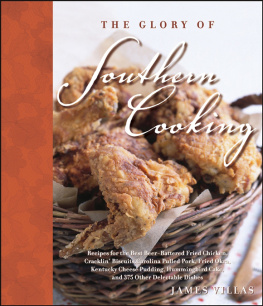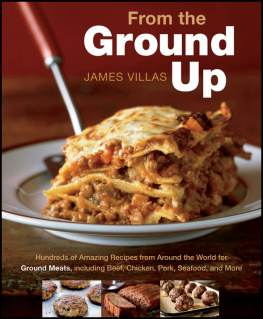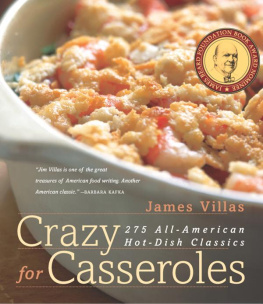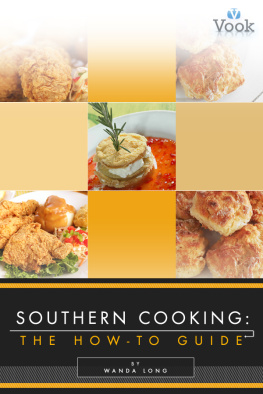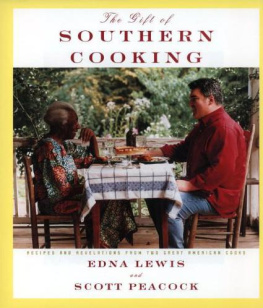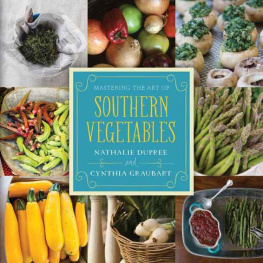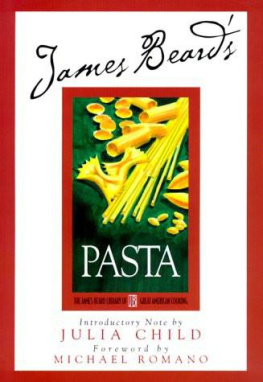James Villas - The Glory of Southern Cooking
Here you can read online James Villas - The Glory of Southern Cooking full text of the book (entire story) in english for free. Download pdf and epub, get meaning, cover and reviews about this ebook. year: 2012, publisher: Houghton Mifflin Harcourt, genre: Home and family. Description of the work, (preface) as well as reviews are available. Best literature library LitArk.com created for fans of good reading and offers a wide selection of genres:
Romance novel
Science fiction
Adventure
Detective
Science
History
Home and family
Prose
Art
Politics
Computer
Non-fiction
Religion
Business
Children
Humor
Choose a favorite category and find really read worthwhile books. Enjoy immersion in the world of imagination, feel the emotions of the characters or learn something new for yourself, make an fascinating discovery.
- Book:The Glory of Southern Cooking
- Author:
- Publisher:Houghton Mifflin Harcourt
- Genre:
- Year:2012
- Rating:4 / 5
- Favourites:Add to favourites
- Your mark:
- 80
- 1
- 2
- 3
- 4
- 5
The Glory of Southern Cooking: summary, description and annotation
We offer to read an annotation, description, summary or preface (depends on what the author of the book "The Glory of Southern Cooking" wrote himself). If you haven't found the necessary information about the book — write in the comments, we will try to find it.
James Villas: author's other books
Who wrote The Glory of Southern Cooking? Find out the surname, the name of the author of the book and a list of all author's works by series.
The Glory of Southern Cooking — read online for free the complete book (whole text) full work
Below is the text of the book, divided by pages. System saving the place of the last page read, allows you to conveniently read the book "The Glory of Southern Cooking" online for free, without having to search again every time where you left off. Put a bookmark, and you can go to the page where you finished reading at any time.
Font size:
Interval:
Bookmark:


Copyright 2007 by James Villas. All rights reserved
For information about permission to reproduce selections from this book, write to Permissions, Houghton Mifflin Harcourt Publishing Company, 215 Park Avenue South, New York, New York 10003.
www.hmhbooks.com
Library of Congress Cataloging-in-Publication Data is available.
ISBN 978-0-7645-7601-0 (hardcover)
ISBN 978-1-118-38358-2 (paperback)
eISBN 978-0-544-18656-9
v1.0313
Other Books By James Villas

American Taste , 1982
The Town & Country Cookbook , 1985
James Villas Country Cooking , 1988
Villas at Table , 1988
The French Country Kitchen , 1992
My Mothers Southern Kitchen , 1994
Stews, Bogs, and Burgoos , 1997
My Mothers Southern Desserts , 1998
My Mothers Southern Entertaining , 2000
Between Bites , 2002
Crazy for Casseroles , 2003
Biscuit Bliss , 2004
Stalking the Green Fairy , 2004
To
Gail Killian Kennedy
We Were Never Too Young

PREFACE

Its appropriate to say that the basic foundation of this cookbook can be traced back over a decade to a much more limited book I wrote on my mothers Southern kitchen. Its also only fair to reveal that this cookbook was not really my idea but that of one of my editorsa Yankee, no less. Things came to a head a couple of years back when, having devoted an entire chapter of a book of collected food essays to such topics as Southern pig, grits, okra, and Brunswick stew, I exclaimed one day, in my typically florid and shameless way, Ive come to the definite conclusion that Southern cooking is not only the one legitimate cuisine in this country but that what Ive written about so far is just the tip of the iceberg. And to reinforce my stern conviction, I had to add, As far as Im concerned, Southern cookery is right there on the same level with French cuisine bourgeoise and Italian cucina casereccia the sacred traditions, the incredible variety of regional dishes, the prevalence of fresh local ingredients, the distinctive cooking techniques, everything.
For a moment, my stunned editor simply glared at me as if I were indulging in more than a bit of prejudicial hyperbole or were slightly mad. Then, popping into her mouth another small pecan-cheese biscuit Id brought to the office, she calmly asked me to talk beyond fried chicken and congealed salad and cornbread and pecan pie. Perhaps for an hour, I went on about Kentucky beer cheese, Charleston hobotee, Cajun maque choux, Pamlico muddle, Lowcountry bog, Arkansas dirty rice, Maryland crabmeat Dewey, West Virginia deviled oxtails, New Orleans calas, and Lord knows how many other unusual dishes drawn from all over Dixie. She waited, succumbed to the temptation of still another biscuit, then, hurling a hand in the air, declared bluntly, Okay, thats the book you need to do. The whole shebang. Make your case. Everything you know about Southern cooking and why its so special.
No doubt the proposition was a little daunting, but the challenge was just too compelling to turn down. Born and bred in North Carolina, I havent actually lived in the South since finishing college, due to the demands of my profession. Ask anyone who knows me, my rebellious spirit, and my drawl, however, and theyll most likely insist that Ive never really left home. My entire family still resides in the South; I return routinely to visit relatives and friends and to venerate my roots; for over two decades I roamed the major cities and small towns and back roads from Maryland to Kentucky to Louisiana in order to report on food traditions and restaurants for Town & Country and other magazines; and just the thought of going more than a few months without nourishing my belly and soul with genuine pork barbecue, bowls of she-crab soup and gumbo, fried okra and catfish, and baskets of hush puppies is still enough to provoke panic. At home, my kitchen is never without at least five pounds of Southern whole-hog sausage, slabs of perfectly cured and aged North Carolina or Tennessee country ham, tubs of hickory-smoked chopped barbecue, sacks of Southern flour, and carefully labeled jars of homemade fruit preserves. And when friends come to eat, theres never any question what style of food theyll be served.
Such is the sovereignty of Southern cookery to anybody (Reb and outsider alike) who has fully indulged in its many glories that comparisons with other American styles are almost ludicrous. To be sure, each section of the country can boast a few wonderful and distinctly American dishes (New England clam chowder and brown bread, New York corned beef and pastrami, Midwestern smoked sausages and honey cakes, California Cobb salad and cioppino, Pacific Northwestern planked salmon and cherry soup, Southwestern chili and barbecued beef brisket, Hawaiian roast suckling pig and baked coconut yams). But only the South, if only by the sheer number and variety of its dishes developed over the centuries, can claim to have created and codified a regional cuisine that is as readily identifiable as, indeed, those of France, Italy, and even China. The story of that evolution is long, complex, and often mysterious, and while I do delve consistently into many of its aspects throughout this book, it was never my intention to recount the entire cultural history in such intricate and brilliant detail as that provided in John Egertons definitive study, Southern Food, or Damon Lee Fowlers more limited but equally impressive Classical Southern Cooking.
Instead, the primary goal I set for myself with this book was to canvass the food traditions of every single state in the South, try to clarify the similarities and differences among most of the best-known classic dishes, expose numerous area specialties that remain obscure and could even be on the verge of extinction, and generally document, in recipes and headnotes, the most important factors inherent in this unique style of cooking. Like most Southern food writers, I do not consider Texas to be part of the South, but rather a state (if not almost a separate country) with its own individual gastronomic format based largely on other proud traditions and influences. Consequently, there are no Texas recipes in this book, renowned and delicious though many are. Moreover, if such states as Delaware and West Virginia appear to be underrepresented, its only because, for historical or geographical reasons, their innovations in the development of Southern cooking have been relatively minor compared with those of the Virginia Tidewater, the Carolina and Georgia Lowcountry, the river deltas of Mississippi and Louisiana, the piedmont hills of Kentucky and Tennessee, the two coasts of Florida, and other areas.
In these pages youll certainly find a full display of what most consider to be staples of the Southern tablethe fried chicken and pork barbecue, the grits and greens, the biscuits and cornbread, the cobblers and pound cakesbut there are also many recipes for neglected dishes that are so indigenous to certain areas that not even Southerners from other states are likely to recognize them: Kentucky hot browns and cheese pudding, Mississippi fried dill pickles and chicken spaghetti, Alabama thyme tongue and biscuit muffins, Louisiana Natchitoches meat pies and baked mirlitons, Tennessee frozen tomato and casserole cheese bread, South Carolina frogmore stew and awendaw, and Florida conch fritters and papaya cobbler. Such amazing diversity is the result not only of the Souths vast abundance of natural food ingredients and the ability of regional cooks to transform these components into distinctive dishes, but also of centuries of multiple ethnic influences, without which Southern cookery would never have evolved as it has.
Font size:
Interval:
Bookmark:
Similar books «The Glory of Southern Cooking»
Look at similar books to The Glory of Southern Cooking. We have selected literature similar in name and meaning in the hope of providing readers with more options to find new, interesting, not yet read works.
Discussion, reviews of the book The Glory of Southern Cooking and just readers' own opinions. Leave your comments, write what you think about the work, its meaning or the main characters. Specify what exactly you liked and what you didn't like, and why you think so.

